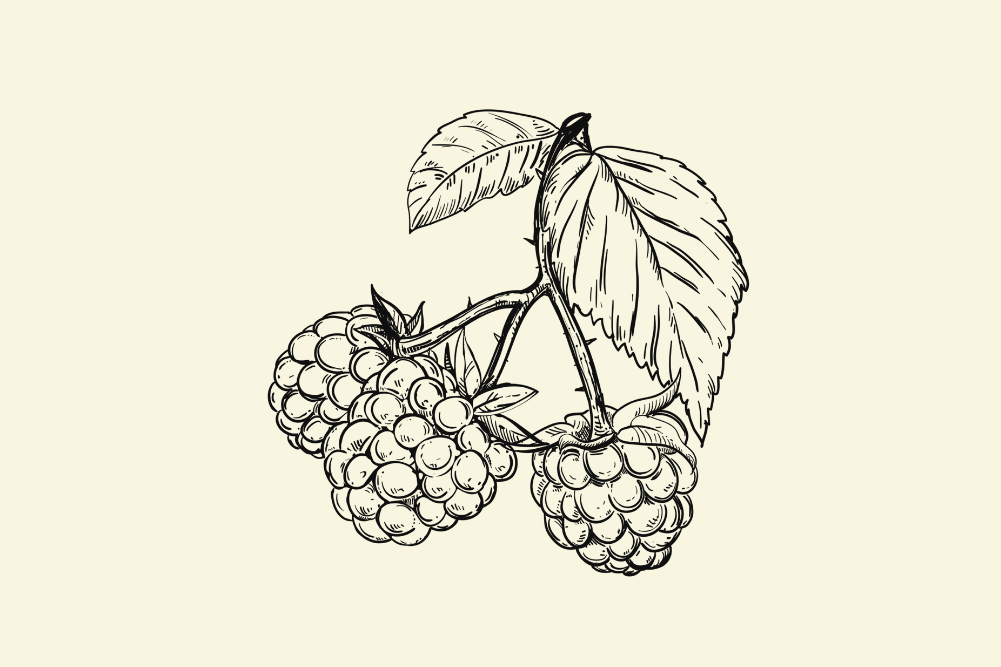Ginger the great: spicy, warming and powerfully healing
Aromatic, tingling, spicy, pungent and warming, ginger adds bursts of flavour to your cooking, but this plant, favoured around the world, also packs a powerful healing punch.
If the events surrounding COVID-19 have taught us nothing else (and they have offered lessons aplenty) they have shown us how easily we take things for granted. Joni Mitchell put that simple truism into lyric form when she sang, “You don’t know want you’ve got till it’s gone”, and COVID-19 showed us that something as fundamental as social interaction can be taken away in a heartbeat. Appreciation is a powerful mental state and an under-practised skill, so let’s take a moment to acknowledge a ubiquitous food, probably underrated by many due to its very commonness, the rhizome we all know and love: ginger.
A world of appreciation
What do ancient Chinese sailors, Jacobean English taverns and ancient Roman banquets have in common? No, the answer isn’t “pigtails” (although the judges may well accept that response). The thematically minded reader will have leapt to the conclusion that the mot juste is, in fact, “ginger”. To explain the link, we just have to wander down History Lane and discover as we do so that it is a thoroughfare crowded with cultures from around the world that have valued this ugly little root.
Before we get onto the plant’s universal popularity, it is worth addressing what the pedants among us will be jumping up and down about following the deliberately tantalising ending to that previous sentence: is ginger a root or a rhizome? We will, all of us, stand before a plant and with sure confidence draw on the lessons of Year 2 biology to be able to label the parts of said vegetation as varyingly “flower”, “leaf”, “stem” and the unseen subterranean portion as “root”. It gets a bit fuzzier though when “rhizomes” come into the equation.
Ginger’s big strengths are its anti-inflammatory properties firstly, and secondly as a major herb for the digestive system.
Roots are the part of the plant that draw nutrients from the soil and they usually descend vertically into the ground and look fibrous. A rhizome, on the other hand, is an underground stem that usually grows horizontally and is used by the plant to store energy. So, what we call “ginger” is in fact the rhizome of this perennial plant that grows annual “pseudostems” which are actually rolled leaves. Interestingly, ginger does not produce seeds but grows by sprouting from its spreading rhizomes; it is likely that it has been cultivated for so long by humans that it has simply “forgotten” how to seed, because it hasn’t had to, which brings us back to its incredible popularity.
The fleshy, aromatic rhizome of ginger has beguiled almost any culture you can name, and the earliest mentions of ginger go back to the beginning of history itself, which suggests that the plant was probably also used by humanity in the prehistoric period.
What we know for sure is that ginger gains honourable mention in the Pen Tsao Ching, a Chinese herbal compiled around 3000 BCE. Traditional Ayurvedic texts from India also laud ginger and recommend that everyone should eat it fresh before and after meals for its digestive effects. The Pen Tsao Ching recommends it for colds, fever, chills, tetanus and leprosy. Over time Chinese women began taking ginger for menstrual discomfort and the nausea of morning sickness. Chinese sailors picked up on the anti-nausea effects and would chew the plant to prevent seasickness.
Other than the obvious Asian-inspired meals, I love ginger in salad dressings, smoothies and simply grated into bone broth for a warming cup of goodness.
Ancient Greek traders heard about the Chinese using ginger as a digestive aid and soon the Greeks were wrapping it in sweetened bread to eat as a stomach settler after a big meal, thus making the first “gingerbread”. Like just about everything else, the Romans stole the gingerbread idea from the Greeks, and no Roman feast would take place without some ginger on hand to soothe bloated Roman bellies.
After the fall of the Roman Empire and the resultant decline in trade with Asia, ginger became scarce in Europe for centuries. However, towards the end of the medieval period, by the 14th century, it was very common in European cooking. The Greeks’ gingerbread had evolved into sugary gingerbread men, and in England ginger was being incorporated into beer in the forerunner of what we know as ginger-ale or ginger-beer.
On the other side of the Atlantic, ginger was equally appreciated by the Native American culture. Much like the Ayurvedic and Chinese approach, Native Americans believed ginger to be both a physical and spiritual cleanser. While the Native Americans would not eat garlic or onions before religious ceremonies for fear of causing divine offence, they would eat ginger in great quantities because it left them smelling sweet and presentable to the gods.
The global popularity of the plant continues today as modern humans embrace it for both medicinal and culinary uses.
The medical marvel
When you feel the warm buzz of ginger in your mouth it is not difficult to believe that it is doing you good. The real question with ginger’s healing powers is where to begin.
Dr Karen Bridgman is a naturopath currently practising at Lotus Health and Lotus Dental in Neutral Bay (Sydney). She has been practising for 40 years and says, “In my mind, ginger’s big strengths are its anti-inflammatory properties firstly, and secondly as a major herb for the digestive system. As a spice to protect the digestive system it is almost unequalled.” Naturopath Lisa Guy agrees.
Guy is a naturopath, author and passionate foodie with more than 19 years’ clinical experience, having established the Sydney-based naturopathic clinic Art of Healing and founding Bodhi Organic Tea. According to Guy, “Ginger has impressive anti-inflammatory properties, making it particularly useful for treating conditions such as arthritis and inflammatory gut issues. Its digestive properties make it very helpful for treating digestive issues like excessive bloating and wind.”
There is a lot that can be said about ginger’s healing capacity, but the story has to begin with its anti-nausea effects. As Bridgman says, “Ginger is mostly known for its healing effects on nausea and vomiting.”
Anti-nausea
Supporting what Chinese and Greek sailors knew centuries ago, ginger has been shown in both experimental models and human studies to ease nausea and reduce vomiting. This “anti-emetic” effect is due to multiple ingredients in ginger which in turn have diverse actions. Ginger’s ingredients have been shown to act on receptors for 5-HT and prostaglandins in the gut to soothe nausea. It has been shown to be particularly effective in seasickness and also morning sickness of pregnancy. Guy observes, “Pregnant women often rely on ginger for relief from morning sickness.” Caution should be used in taking any medication during pregnancy and you should talk to your practitioner before using it, but a review of double-blind, randomised and controlled trials found that not only is ginger effective for morning sickness, it is also safe.
Digestion
As we have already discovered, the digestive properties of ginger have been known for millennia. It is classed as a “carminative”, which means that it relaxes the smooth muscle in the intestines, and to anyone with pain from gas, that provides blessed relief. Studies show that ginger also stimulates the flow of saliva, as well as improving the movement of food through the intestines. Ginger also has anti-ulcer activity in the digestive tract, and studies have shown that it will stop Helicobacter pylori, a bacterium implicated in gastric ulcers, from attaching to the gut wall. No wonder it is regarded as a digestive tonic.
Anti-inflammatory
Although substances known as gingerols have received a lot of the credit, there is a range of substances in ginger that have anti-inflammatory effects. These effects are graphically seen in the most widely spread of all conditions, arthritis. In a double-blind, placebo-controlled, crossover study on people with osteoarthritis of the knee, six months of treatment led to reductions in pain, reductions in swelling and increases in mobility.
Cardiovascular health
High levels of low-density lipoprotein (LDL) cholesterol are associated with a higher risk of heart disease. As Guy points out, “Ginger has been shown to be beneficial for cardiovascular health, as it helps lower high cholesterol and triglyceride levels, while raising beneficial HDLs.”
There is also evidence that ginger lowers blood sugar, is antiviral, antifungal, antioxidant and supportive of immune function. It can also thin the blood, so be wary if you are already taking blood-thinning medication. With so many benefits the question becomes, how do you take your medicinal ginger?
“Ideally the fresh or dried roots are best,” says Bridgman. “The difference between a food and a therapy is the dose and the frequency. So if you are taking ginger as a specific remedy it will need to be taken daily. In these instances, the tea or the tinctures or extracts are more practical. For travel sickness the tablets are often used for convenience, although I also find the tea or even the raw ginger work well.”
Other than the obvious Asian-inspired meals, I love ginger in salad dressings, smoothies and simply grated into bone broth for a warming cup of goodness.
According to Lisa Guy, “I recommend taking ginger in a more concentrated form as a herbal tincture or tablet for alleviating pain and inflammation associated with arthritis and other inflammatory conditions. A lot of women find ginger tea or tablets to be very beneficial for easing morning sickness. Ginger tea with some lemon and manuka honey is an effective remedy for soothing sore inflamed throats and supporting immune health. Make sure to cover the teapot or cup while you’re brewing so the active volatile oils don’t escape. Including ginger, either tea or fresh, daily in the diet is an excellent way to complement a healthy well-balanced diet rich in plant-based foods to help reduce inflammation throughout the body.”
You will find an array of ginger tinctures (alcoholic extracts), capsules and tablets on the market. Fresh ginger root is available everywhere. As the experts say, the form of ginger you need may vary with your reason for using it. If you want a warming, soothing beverage for your sore throat, however, get out your one-litre thermos. Get a chunk of ginger rhizome about three centimetres long, peel it and chop it up into small pieces. Put the pieces in the thermos and fill it with boiling water before sealing. Wait three or four hours before opening it, and when you do, you will have a delightful warming, anti-inflammatory drink that your throat will love.
King of the kitchen
Although ginger’s medicinal credentials are impressive, it is as a culinary herb that it really makes its mark. We’ve already mentioned that it contains antioxidants, which is partly why it may have been so heavily used in baked goods down the centuries because it was acting as a preservative as well as a flavouring. There are also substances called “proteases” in ginger that break down proteins and thus act as a tenderiser when used in a marinade for meats. With a multitude of actions and a distinct yet versatile flavour, it is no wonder that ginger finds itself in so many dishes.
Georgia Harding is a “freestyle cook”, regular recipe contributor to EatWell magazine, naturopath and the founder of the website Well Nourished. Harding says, “Other than the obvious Asian-inspired meals, I love ginger in salad dressings, smoothies and simply grated into bone broth for a warming cup of goodness. It is, undoubtedly, one of my favourite flavours.”
As Harding indicates, ginger is a mainstay of Asian cuisine. You will find it in stir-fries, curries, braises and condiments that originate from Beijing to Surabaya. Usually the ginger rhizome is sautéed and often combined with some garlic or onion to mellow the “heat.” Indeed, like most of us, the longer ginger cooks the more mellow it becomes. Use it raw in a salad or smoothie and your dish will be lifted by the unmistakable zing.
[Ancient] Greeks were wrapping ginger in sweetened bread to eat as a stomach settler after a big meal, thus making the first “gingerbread"
There’s a saying that goes to the effect, “a poor worker blames her/his tools”. Equally, a poor chef might blame the quality of her ginger, because the key is choosing the good stuff. According to Harding, “Fresh ginger has an almost transparent skin. The thicker and more wrinkled the skin, the older it is. I look for ginger with a light, smooth skin.” Mind you, that dark-skinned variety is usually later-harvested and is more fibrous with a stronger flavour. So if you want a bigger spice kick, then some darker ginger may be what you want. You should also choose ginger that feels solid and heavy, as soft ginger is starting to wither.
Once you have chosen your ginger, if you don’t want to use all of it that day, Harding says, “I store it in an airtight glass container in the crisper compartment of the fridge.” If you store it that way, it will keep for a few weeks.
When it comes to preparation, fresh ginger can be sliced, cut into matchsticks, chopped, grated or ground to a paste. Unless you have a particularly young variety, you will need to peel it before use. Harding says, “I find ginger releases its flavour best when finely grated on a zester. It really packs a punch when prepared this way.” You might also find some recipes call for “ginger juice”, which can be easily prepared by placing grated ginger on a piece of cheesecloth and squeezing to collect the juice.
Be it ever so humble, ginger is a diverse, healing and flavoursome part of life. It’s worth taking a moment to appreciate this everyday rhizome because however you slice it, it really is great.








